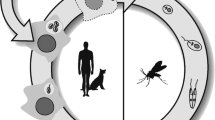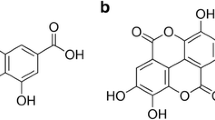Abstract
Anti-Leishmanial drug therapy faces significant challenges related to cytotoxicity and drug resistance. Thus, new and efficient anti-Leishmanial drugs need to be identified. Due to their broad-spectrum antimicrobial and also immunomodulatory activities, antimicrobial peptides (AMPs) have attracted considerable attention. In this study, we comparatively assessed the anti-Leishmanial activities of two recently identified AMPs (dicentracin-like and moronecidine-like) and the well-known AMP piscidin from the hybrid striped bass. AMPs were first assessed against Leishmania major promastigotes using MTS. Subsequently, macrophages were infected with L. major and treated with AMPs to evaluate anti-amastigotes activity of AMPs, and non-infected macrophages were treated with AMPs to determine cytotoxicity against mammalian cells using MTS. The induction of factors limiting L. major growth (IL-12, TNF-α and reactive oxygen species (ROS)) by AMPs was measured by ELISA and dichlorofluorescin-diacetate (DCFH-DA) assay, respectively. Piscidin was more efficacious against L. major promastigotes as compared to dicentracine-like or moronocidin-like peptides, whereas, dicentracine-like and moronocidin-like peptide exhibited a higher activity against L. major amastigotes compared to piscidin. In turn, piscidin was most cytotoxic in non-infected macrophages compared to the other two AMPs. A direct association was observed between hydrophobicity of AMPs and their anti-promastigote and cytotoxic activities. Dicentracine-like or moronocidin-like peptides induced higher levels of IL-12, TNF-α and ROS in macrophages compared to piscidin. Collectively, our results suggest that dicentracine-like and moronocidin-like peptides represent potentially promising multi-functional therapeutic agents that might not only directly kill L. major but also induce anti-Leishmania factors that can limit L. major growth and intracellular survival.






Similar content being viewed by others
Availability of Data and Material
The authors confirm that the data supporting the findings of this study are available within the manuscript.
References
Agier J, Efenberger M, Brzezińska-Błaszczyk E (2015) Cathelicidin impact on inflammatory cells. Cent Eur J Immunol 40:225–235
Ansari MY, Equbal A, Dikhit MR, Mansuri R, Rana S, Ali V, Sahoo GC, Das P (2016) Establishment of correlation between in-silico and in-vitro test analysis against Leishmania HGPRT to inhibitors. Int J Biol Macromol 83:78–96
Chessa C, Bodet C, Jousselin C, Wehbe M, Lévêque N, Garcia M (2020) Antiviral and Immunomodulatory Properties of Antimicrobial Peptides Produced by Human Keratinocytes. Front Microbiol 11:1155. DOI https://doi.org/10.3389/fmicb.2020.01155
Chifiriuc MC, Grumezescu AM, Lazar V, Bolocan A, Triaridis S, Grigore R, Bertesteanu S (2014) Contribution of Antimicrobial Peptides to the Development of New and Efficient Antimicrobial Strategies. Curr Proteomics 11:98–107
Chiou PP, Lin CM, Perez L, Chen TT (2002) Effect of cecropin B and a synthetic analogue on propagation of fish viruses in vitro. Mar Biotechnol 4:294–302
Chiou TT, Wu JL, Chen TT, Lu JK (2005) Molecular cloning and characterization of cDNA of penaeidin-like antimicrobial peptide from tiger shrimp (Penaeus monodon). Mar Biotechnol 7:119–127
Cobb SL, Denny PW (2010) Antimicrobial peptides for leishmaniasis. Curr Opin Investig Drugs 11:868–875
Dayakar A, Chandrasekaran S, Kuchipudi SV. Kalangi SK (2019) Cytokines: key determinants of resistance or disease progression in visceral leishmaniasis: opportunities for novel diagnostics and immunotherapy. Front Immunol 10:670
Diamond G, Beckloff N, Weinberg A, Kisich KO (2009) The roles of antimicrobial peptides in innate host defense. Curr Pharm Des 15:2377–2392
Fan C, Wu LH, Zhang GF, Xu F, Zhang S, Zhang X, Sun L, Yu Y, Zhang Y (2017) 4’ Hydroxywogonin suppresses lipopolysaccharide-induced inflammatory responses in RAW 264.7 macrophages and acute lung injury mice. PLoS One. https://doi.org/10.1371/journal.pone.0181191
Fuertes MA, Nguewa PA, Castilla J, Alonso C, Pérez JM (2008) Anticancer compounds as leishmanicidal drugs: challenges in chemotherapy and future perspectives. Curr Med Chem 15:433–439
Gharavi MJ, Nobakht M, Khademvatan SH, Fani F, Bakhshayesh M, Roozbehani M (2011a) The Effect of Aqueous Garlic Extract on Interleukin-12 and 10 Levels in Leishmania major (MRHO/IR/75/ER) Infected Macrophages. Iranian J Publ Health 40:105–111
Guilhelmelli F, Vilela N, Albuquerque P, Derengowski Lda S, Silva-Pereira I, Kyaw CM (2013) Antibiotic development challenges: the various mechanisms of action of antimicrobial peptides and of bacterial resistance. Front Microbiol 4:353–365
Irazazabal LN, Porto WF, Ribeiro SM, Casale S, Humblot V, Ladram A, Franco OL (2016) Selective amino acid substitution reduces cytotoxicity of the antimicrobial peptide mastoparan. Biochim Biophys Acta 1858:2699–2708
Kim JK, Lee SA, Shin S, Lee JY, Jeong KW, Nan YH, Park YS, Shin SY, Kim Y (2010) Structural flexibility and the positive charges are the key factors in bacterial cell selectivity and membrane penetration of peptoid-substituted analog of Piscidin 1. Biochim Biophys Acta 1798:1913–1925
Kumar A, Tripathi AK, Kathuria M, Shree S, Tripathi JK, Purshottam RK, Ramachandran R, Mitra K, Ghosh JK (2016) Single Amino Acid Substitutions at Specific Positions of the Heptad Repeat Sequence of Piscidin-1 Yielded Novel Analogs That Show Low Cytotoxicity and In Vitro and In Vivo Antiendotoxin Activity. Antimicrob Agents Chemother 60:3687–3699
Lei J, Sun L, Huang S, Zhu C, Li P, He J, Mackey V, Coy DH, He Q (2019) The antimicrobial peptides and their potential clinical applications. Am J Transl Res 11:3919–3931
Lynn MA, Kindrachuk J, Marr AK, Jenssen H, Panté N, Elliott MR, Napper S, Hancock RE, McMaster WR (2011) Effect of BMAP-28 antimicrobial peptides on Leishmania major promastigote and amastigote growth: role of leishmanolysin in parasite survival. PLoS Negl Trop Dis. https://doi.org/10.1371/journal.pntd.0001141
Marr AK, McGwire BS, McMaster WR (2012) Modes of action of Leishmanicidal antimicrobial peptides. Future Microbiol 7:1047–1059
Mitra AK, Mawson AR (2017) Neglected tropical diseases: epidemiology and global burden. Trop Med Infect Dis. https://doi.org/10.3390/tropicalmed2030036
Mohammad H, Thangamani S, Seleem MN (2015) Antimicrobial peptides and peptidomimetics - potent therapeutic allies for staphylococcal infections. Curr Pharm Des 21:2073–2088
Mohammadi M, Taheri B, Momenzadeh N, Salarinia R, Nabipour I, Farshadzadeh Z, Bargahi A (2018) Identification and characterization of novel antimicrobial peptide from hippocampus comes by in silico and experimental studies. Mar Biotechnol 20:718–728
Mor A (2009) Multifunctional host defense peptides: antiparasitic activities. Febs j 276:6474–6482
Nayak T, Mandal SM, Neog K, Ghosh AK (2018) Characterization of a Gloverin-Like Antimicrobial Peptide Isolated from Muga Silkworm, Antheraea assamensis. Int J Pept Res Ther 24::337–346. DOI https://doi.org/10.1007/s10989-017-9618-0
Ngamprasertchai T, Boonyasiri A, Charoenpong L, Nimitvilai S, Lorchirachoonkul N, Wattanamongkonsil L, Thamlikitkul V (2018) Effectiveness and safety of polymyxin B for the treatment of infections caused by extensively drug-resistant Gram-negative bacteria in Thailand. Infect Drug Resist 11:1219–1224
Gharavi MJ, Nobakht M, Khademvatan SH, Bandani E, Bakhshayesh M, Roozbehani M (2011b) The Effect of Garlic Extract on Expression of INFγ And Inos Genes in Macrophages Infected with Leishmania major. Iranian J Parasitol 6:74–81
Ponte-Sucre A, Gamarro F, Dujardin JC, Barrett MP, López-Vélez R, García-Hernández R, Pountainn AW, Mwenechanya R, Papadopoulou B (2017) Drug resistance and treatment failure in leishmaniasis: A 21st century challenge. PLoS Negl Trop Dis. https://doi.org/10.1371/journal.pntd.0006052
Roma EH, Macedo JP, Goes GR, Gonçalves JL, Castro W, Cisalpino D, Vieira LQ (2016) Impact of reactive oxygen species (ROS) on the control of parasite loads and inflammation in Leishmania amazonensis infection. Parasit Vectors. https://doi.org/10.1186/s13071-016-1472-y
Sathyamoorthi A, Kumaresan V, Palanisamy R, Pasupuleti M, Arasu MV, Al-Dhabi NA, Marimuthu K, Amin SN, Arshad A, Yusoff FM (2019) Therapeutic cationic antimicrobial peptide (CAP) derived from fish aspartic proteinase Cathepsin D and its antimicrobial mechanism. Int J Pept Res Ther 25:93–105
Shafiee F, Minaiyan G, Moazen F, Jahanian-Najafabadi A (2017) Recombinant Production and Intein-Mediated Purification of an Antimicrobial Peptide, BR2. Int J Pept Res Ther 23::501–507. DOI https://doi.org/10.1007/s10989-017-9583-7
Sundar S, Chakravarty J (2015) An update on pharmacotherapy for leishmaniasis. Expert Opin Pharmacother 16:237–252
Taheri B, Mohammadi M, Momenzadeh N, Farshadzadeh Z, Roozbehani M, Dehghani P, Hajian S, Darvishi S, Shamseddin J (2019) Substitution of lysine for isoleucine at the center of the nonpolar face of the antimicrobial peptide, piscidin-1, leads to an increase in the rapidity of bactericidal activity and a reduction in toxicity. Infect Drug Resist 12:1629–1647
Taheri B, Mohammadi M, Nabipour I, Momenzadeh N, Roozbehani M (2018) Identification of novel antimicrobial peptide from Asian sea bass (Lates calcarifer) by in silico and activity characterization. PLoS One. https://doi.org/10.1371/journal.pone.0206578
Torrent M, Pulido D, Rivas L, Andreu D (2012) Antimicrobial peptide action on parasites. Curr Drug Targets 13:1138–1147
Vaara M (2019) Polymyxin derivatives that sensitize Gram-Negative bacteria to other antibiotics. Molecules. https://doi.org/10.3390/molecules24020249
Wang S, Ye Q, Wang K, Zeng X, Huang S, Yu H, Ge Q, Qi D, Qiao S (2019) Enhancement of macrophage function by the antimicrobial peptide sublancin protects mice from methicillin-resistant Staphylococcus aureus. J Immunol Res 2019:3979–352
Wozencraft A, Blackwell J (1987) Increased infectivity of stationary-phase promastigotes of Leishmania donovani: correlation with enhanced C3 binding capacity and CR3-mediated attachment to host macrophages. Immunology 60:559
Zhang W, Li Z, Miao X, Zhang F (2009) The screening of antimicrobial bacteria with diverse novel nonribosomal peptide synthetase (NRPS) genes from South China sea sponges. Mar Biotechnol 11:346–355
Zheng Y, Niyonsaba F, Ushio H, Nagaoka I, Ikeda S, Okumura K, Ogawa H (2007) Cathelicidin LL-37 induces the generation of reactive oxygen species and release of human alpha-defensins from neutrophils. Br J Dermatol 157:1124–1131
Acknowledgements
We thank Bushehr University of Medical Sciences for providing research budget. This was supported by a research Grant (Code: 1218) from Bushehr University of Medical Sciences.
Author information
Authors and Affiliations
Corresponding author
Ethics declarations
Conflict of interest
The authors declare that there are no conflicts of interest regarding the publication of this article.
Additional information
Publisher’s Note
Springer Nature remains neutral with regard to jurisdictional claims in published maps and institutional affiliations.
Electronic supplementary material
Below is the link to the electronic supplementary material.
Rights and permissions
About this article
Cite this article
Mohammadi, M., Moradi Hasan-Abad, A., Dehghani, P. et al. Dicentracin-Like from Asian sea bass Fish and Moronecidine-Like from Hippocampus Comes: Two Candidate Antimicrobial Peptides Against Leishmanina major Infection. Int J Pept Res Ther 27, 769–778 (2021). https://doi.org/10.1007/s10989-020-10125-4
Accepted:
Published:
Issue Date:
DOI: https://doi.org/10.1007/s10989-020-10125-4




